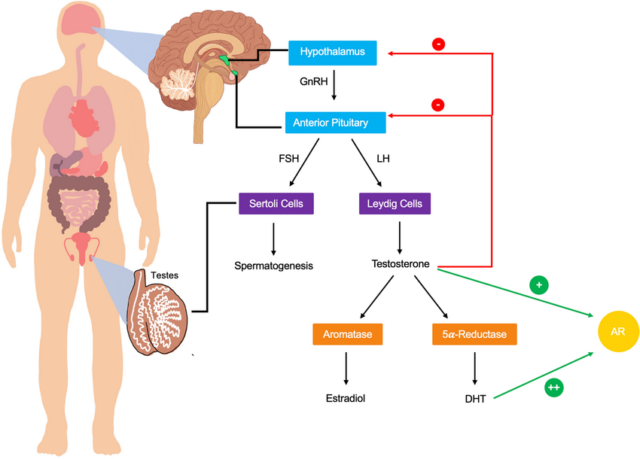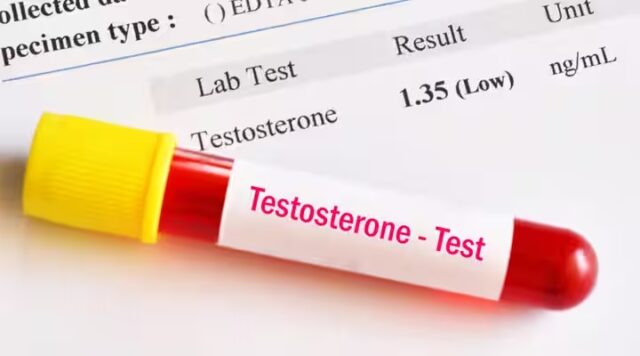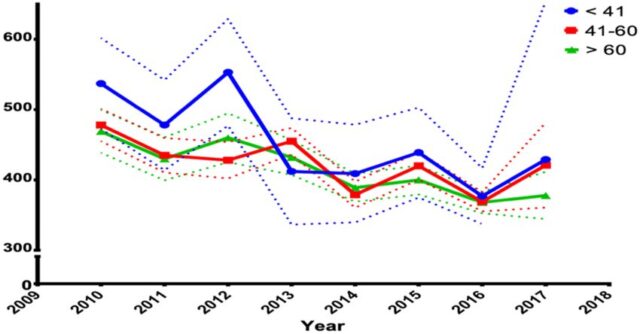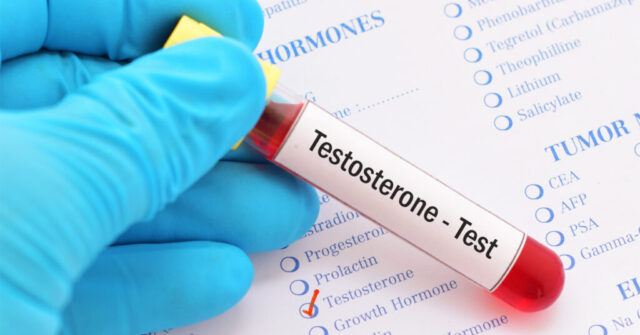
Testosterone significantly impacts men’s health, influencing physical, mental, and emotional well-being. It’s essential in developing male characteristics during puberty and maintaining various bodily functions throughout life, such as muscle strength, bone density, and sexual health. This hormone’s levels vary with age, reflecting crucial changes in a man’s health status.
In this post, we explore “Average Testosterone Level by Age,” and we are offering a comprehensive chart and detailed analysis for a better understanding of this vital aspect of men’s health. Knowing the average testosterone levels for different age groups can help men and their healthcare providers better monitor and manage health and well-being. This understanding is crucial for the early detection of hormonal imbalances and for making informed decisions.
What is Testosterone?

Testosterone is a steroid hormone, primarily produced in the testes in males and is a critical member of the androgen hormone family. It’s responsible for developing male reproductive tissues, such as the testes and prostate, and promoting secondary sexual characteristics like increased muscle and bone mass, and the growth of body hair. This hormone also plays a significant role in general health and well-being, influencing mood, energy levels, and cognitive functions.
Significance in the Body
Testosterone’s influence extends beyond sexual health, impacting overall physical and mental well-being. It plays a vital role in maintaining muscle mass and strength, ensuring healthy bone density, and regulating fat distribution. In terms of mental health, testosterone is linked to mood, energy levels, and even cognitive abilities. It also affects other systems like cardiovascular health, influencing the risk of heart disease.
Production Sites and Process
This hormone is primarily synthesized in the testes, specifically in the Leydig cells. The production process is complex and regulated by the hypothalamic-pituitary-gonadal axis. The hypothalamus releases gonadotropin-releasing hormone (GnRH), which prompts the pituitary gland to produce luteinizing hormone (LH) and follicle-stimulating hormone (FSH). LH then stimulates the Leydig cells in the testes to produce testosterone. This hormonal production is a finely tuned system, responsive to the body’s needs, and changes throughout life.
Regulatory Role of Hypothalamus and Pituitary Gland

The hypothalamus and pituitary gland play crucial roles in regulating testosterone production. The hypothalamus acts as a sensor, gauging its levels and releasing GnRH accordingly. The pituitary gland, in response to GnRH, adjusts the levels of LH and FSH. This feedback loop ensures that testosterone levels remain within an optimal range, adjusting to the body’s varying needs during different stages of life.
Defining Normality
The normal range for this hormone level in men varies, but it’s generally between 300 and 1,000 ng/dL (nanograms per deciliter). However, what is considered ‘normal’ can differ slightly between laboratories due to different measurement techniques and population differences. It’s important to note that normal levels are not just a fixed number; they depend on various factors including age, general health, and lifestyle.
The Importance of Testosterone in Men’s Health
Testosterone is a key hormone in men, playing a crucial role in physical, sexual, and mental health. It regulates muscle mass, bone density, fat distribution, and red blood cell production. Furthermore, it’s essential for sexual function, mood regulation, and overall energy levels. This hormone also affects cognitive abilities and psychological well-being. Maintaining balanced testosterone levels is not just crucial for physical health but also for mental and emotional well-being.
Measurement Units for Testosterone Levels

These hormone levels are typically measured in nanograms per deciliter (ng/dL). This measurement allows for precision in assessing hormonal status. When testing its levels, healthcare providers consider this unit of measurement alongside individual health profiles, age, and symptoms to determine whether the levels are normal, low, or high for a specific individual.
Age-Related Decrease in Testosterone
From around the age of 30, testosterone levels in men begin to decline gradually, at a rate of about 1% per year. This decrease is a natural part of aging, but the rate can vary significantly among individuals. Factors such as lifestyle, health conditions, and genetics play a role in how rapidly their levels decline.
Contributing Factors to Decline
Several factors contribute to the decline in testosterone levels with age. Besides the natural aging process, lifestyle choices like diet, exercise, smoking, and alcohol use significantly impact hormone production. Chronic health conditions such as obesity, diabetes, and hormonal disorders can also accelerate the decline. Stress and mental health are other important factors, as they can affect hormonal balance.
Comprehensive Chart Depicting Average Levels

The chart below illustrates the average testosterone quantity across different age groups. It’s divided into categories such as 20s, 30s, 40s, 50s, and beyond. Each age group shows a range reflecting the average hormone levels typical for that age. This visualization helps in understanding how its levels generally trend as men age.
Age Group – Average Testosterone Level (ng/dL)
| Age Group | Average Testosterone Level (ng/dL) |
| 20 – 29 | 600 – 920 |
| 30 – 39 | 520 – 800 |
| 40 – 49 | 430 – 690 |
| 50 – 59 | 350 – 590 |
| 60+ | 300 – 450 |
Labels and Graphics for Clarity
The chart uses clear labels and straightforward graphics to enhance comprehension. It’s important to note that these values are averages and individual levels may vary. Factors like health, lifestyle, and genetics play a significant role in an individual’s testosterone levels.
Process of Testosterone Testing
Testosterone levels are typically assessed through a blood test, often done in the morning when its levels are usually highest. The test measures the amount of this hormone in the bloodstream. It’s a simple and quick procedure, usually requiring only a blood sample from a vein in the arm.
When Testing is Recommended

Testing for testosterone levels is recommended for men experiencing symptoms of low testosterone, such as decreased libido, fatigue, muscle weakness, or mood changes. It’s also advised for men with conditions that could affect testosterone, such as diabetes, obesity, or hormonal disorders. Regular testing may be recommended for older men, as these hormone levels naturally decline with age.
Potential Consequences of Low Levels
Having low quantities of this hormone can lead to various symptoms and health issues. These may include fatigue, reduced muscle mass and strength, increased body fat, decreased bone density, reduced libido, erectile dysfunction, and mood changes like depression or irritability. Chronic low levels of this hormone can also increase the risk of other health problems, such as cardiovascular diseases and osteoporosis.
Symptoms of Low Testosterone
Common symptoms of low testosterone include a decrease in sex drive, difficulties with erections, reduction in semen volume, hair loss, fatigue, loss of muscle mass, increased body fat, decreased bone mass, mood changes, and affected memory. Recognizing these symptoms is important for early diagnosis and treatment.
Conclusion
Understanding this hormone quantity by age is crucial for men’s health. This post has provided a comprehensive overview of average hormone levels across different age groups, the importance of testosterone, and how to manage levels effectively.









